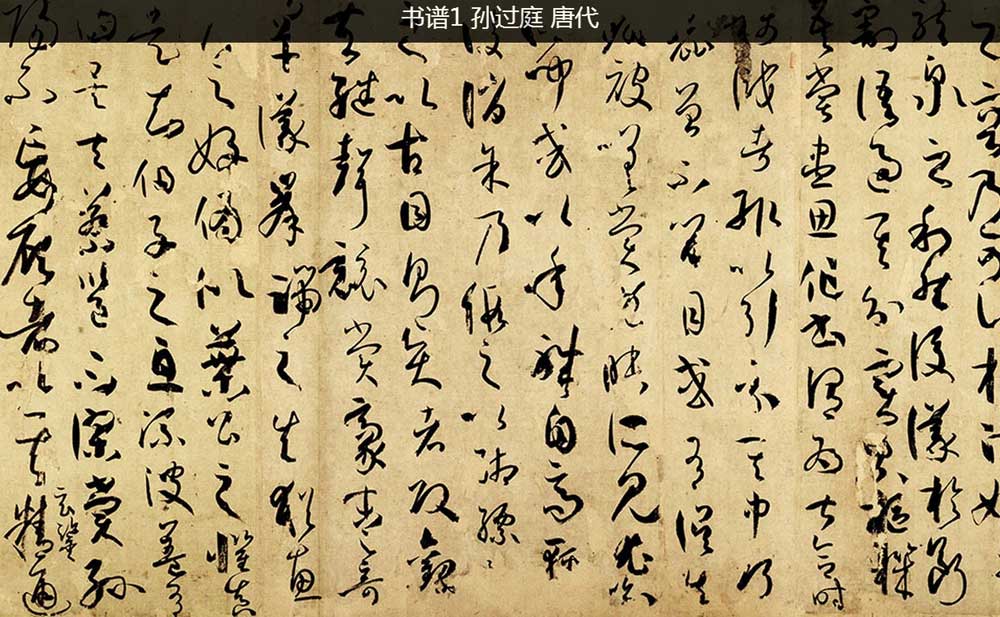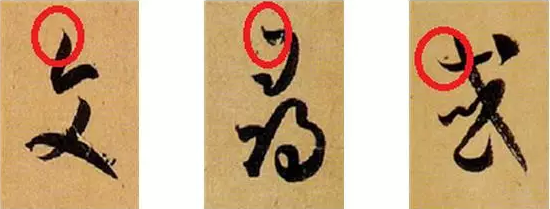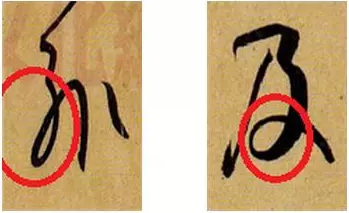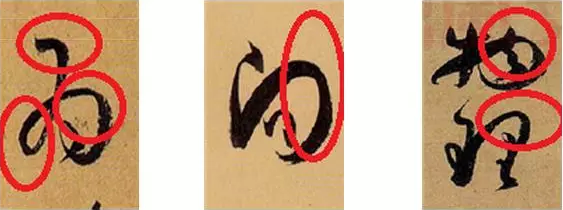Twisting of the spatial movement form of brushwork
Mr. Qiu Zhenzhong's "Several Issues Concerning the Evolution of Brushwork", Ms. Sun Xiaoyun's "Calligraphy Has a Method" and Mr. Meng Huixiang's "Handwriting Skills" have a great influence on me. The content in this article is mostly an analysis based on their theory. Interested friends can look at these works of them, and believe that they will have a deeper understanding of calligraphy. The twisting brushwork mentioned by Mr. Qiu Zhenzhong should be a kind of brushwork with the twisting tube proposed by Ms. Sun Xiaoyun, that is, the twisting of the fingers makes the brushwork constantly change its front surface as it travels.
There are three forms of spatial movement of the brushwork, namely, translation, lifting and twisting. Translation is a motion where the distance between the penholder and the surface of the paper does not move, and it is the most basic form of motion in all calligraphy works. Lifting is the movement of the brush in the direction perpendicular to the paper. Twisting, that is, the rotating motion of the cone surface of the pen on the paper, the pen is constantly changing while moving. The latter two forms of motion, twisting and lifting have brought endless changes to the lines. Observe the contours of the lines, the parallel ones are caused by translation; the roughly symmetrical gradient contours are caused by swinging or lifting; the asymmetrical curved contours are caused by twisting. The twisting stroke produces a compound front, not a pure center or side forward, but the reason for the rich changes in the stipple outline.

Before the formation of regular script, twisting was the main method of writing. With the appearance of regular script, the method of lifting gradually occupied the dominant position. The appearance of Tang Kai in the Tang Dynasty brought this phenomenon to its peak. After the Tang Dynasty, the twisting was missing, and the drawback of lifting and pressing was revealed, that is, the phenomenon of "medium timidity" in which the lines were interrupted. People often make a fuss at the two ends of the strokes, and finish the strokes between lifting and pressing, which makes the strokes weak and weak. When the Qing Dynasty Pavilion body appeared, only the shortcomings brought about by the mentioning press had reached the extreme.
A lot of textual research has been done in "Calligraphy There are Laws (书法有法)", which explains the existence of twisted brushwork and its importance to calligraphy. In Sun Guoting's period, twisting was not missing, so we can find that he used a lot of twisting in his "Shupu (书谱)", which makes the lines very thick, the writing is very ink, and the style of Jin people. "Shupu (书谱)" is still regarded as the best transitional model for learning Wang Xizhi's brushwork.
The following is a list of the applications of the twisting pen method in "Shupu (书谱)".
1. Start the pen

The pen in the book score is not directly entered, but a small tip caused by the process of turning sideways. I think this tip is written by twisting, but the movement is very small, the process of turning sideways. Very quickly.
2. When the skimming is directly connected to the next stroke

3, the big arc turning point

In fact, the twisting pen method appears in the "Book of Books" at any time. Here are a few more obvious places to explain. The important thing is to draw inferences from one another and understand what twisting is all about conceptually and apply it in practice. Verify and improve your temporary study. Of course, the twisting pen method has not yet been concluded, and there have also been relatively large disputes. I think that in the temporary study "Book Book", the finger and the wrist should be used together, and the twisting and lifting should work at the same time, in order to be flexible and closer to the original post.








